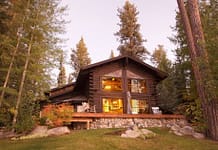As global climate change continues to affect our planet, the frequency and intensity of natural disasters have increased. From floods and wildfires to hurricanes and earthquakes, these events can cause significant damage to human infrastructure and disrupt millions of lives. As a result, construction practices must prioritize weather and earthquake resistance.
In this article, we will explore the importance of understanding weather and earthquake resistance in construction, as well as some key techniques and materials used to withstand these natural disasters.
The Impact of Natural Disasters on Construction
Natural disasters not only cause immediate damage to buildings but also have indirect effects that can affect their long-term durability. For example, extreme weather events like heavy rain or intense heat can weaken a building’s structure and make it more susceptible to future damage. Additionally, earthquakes can cause significant shaking and ground movement that can lead to structural collapses.
In some cases, natural disasters can also expose weaknesses in the construction process or materials used. For instance, poorly designed drainage systems can result in flooding during heavy rain, and low-quality building materials may not be able to withstand intense winds or seismic activity.
The Importance of Weather and Earthquake Resistance
The concept of weather and earthquake resistance in construction is centered around the idea of resilience. Resilient buildings are designed to withstand the forces of natural disasters without significant damage, allowing them to quickly recover and resume normal functionality after an event. This not only protects human lives but also prevents costly repairs and disruptions to daily life.
Additionally, incorporating weather and earthquake resistance into construction practices can also have positive environmental impacts. Energy-efficient building techniques and materials can reduce the carbon footprint of a structure while also making it more resilient to extreme weather events.
Techniques for Weather and Earthquake Resistance
Various techniques can be used to increase a building’s resistance to both weather and earthquakes. These include:
1. Proper Design and Planning
The most crucial aspect of weather and earthquake resistance is proper design and planning. Building codes and standards must be followed to ensure that structures are built to withstand the forces of natural disasters. This includes appropriate foundation design, reinforcement placement, and load-bearing wall construction.
2. Use of Resilient Materials
Certain materials are better equipped to handle extreme weather and seismic activity. For example, steel is a popular choice for building structures in earthquake-prone areas due to its high strength and flexibility. Steel suppliers in Salt Lake City, Utah offer a wide variety of options for construction projects looking to increase their weather and earthquake resistance.
3. Incorporation of Green Infrastructure
Green infrastructure refers to the use of natural elements, such as vegetation and permeable pavement, to manage stormwater runoff and reduce the risk of flooding. This can also help mitigate the impact of intense heat waves in urban areas.
4. Regular Maintenance
Proper and regular maintenance is crucial for ensuring the continued resilience of a building. This includes checking for any potential weak points, repairing any damage, and updating systems in response to changing weather patterns.
Conclusion
In conclusion, understanding weather and earthquake resistance is crucial in construction practices. By implementing proper design techniques, using resilient materials, and incorporating green infrastructure, we can create buildings that are more resistant to natural disasters. This not only protects our infrastructure but also promotes a more sustainable and environmentally friendly construction industry. So let’s continue to prioritize weather and earthquake resistance in all our construction endeavors.
Do you have any experience with weather or earthquake-resistant construction? Share your thoughts and insights in the comments below.








